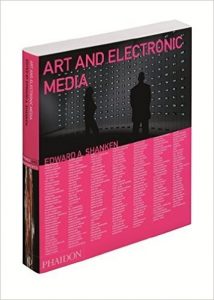In September 2008 Tate launched Noplace Online as a part of Tate’s Intermedia series. Noplace Online is a companion piece of Noplace the net art installation produced by Marek Walczak and Martin Wattenberg who work together since 1997 under the name MW2MW. Noplace is a sequence of physical and online art installations that explore utopian visions. The museum installation includes several screens of different utopian visions, while the Internet version offers viewers the chance to create content online. Online, individuals get the opportunity to generate personalized visions of utopia by reusing uploaded raw material from the Internet, like images, sounds and text. With the Noplace creation software viewers can input a desire or goal by filling in a few words about a place that has not yet exist. Subsequently images are taken from Flickr.com, that have been tagged by the visitor’s words, and are placed together in a video that afterwards can be played an embedded on the web. In order to create new works Noplace reuses material uploaded under the Creative Commons licence.
 Noplace online consists out of a remix culture, through its interactive webpage, different individuals from around the world get the chance to create and share videos. Lessig refers to the artists as creative commons. Noplace is linked to Flickr; viewers fill in words and these words are linked to the tagged pictures. Subsequently these pictures are turned into a video. But how interactive does this make Noplace? Compared to the subjects on Youtube, who create their video from beginning till end, the subject on Noplace only has to fill in words. Why is Noplace considered net.art in contrast to a site like Youtube? For that matter, doesn’t this site – the Art and Electronic Media Online Companion – offer users more opportunities to create their own content than Noplace? Does that make it art, too?
Noplace online consists out of a remix culture, through its interactive webpage, different individuals from around the world get the chance to create and share videos. Lessig refers to the artists as creative commons. Noplace is linked to Flickr; viewers fill in words and these words are linked to the tagged pictures. Subsequently these pictures are turned into a video. But how interactive does this make Noplace? Compared to the subjects on Youtube, who create their video from beginning till end, the subject on Noplace only has to fill in words. Why is Noplace considered net.art in contrast to a site like Youtube? For that matter, doesn’t this site – the Art and Electronic Media Online Companion – offer users more opportunities to create their own content than Noplace? Does that make it art, too?
http://www.bewitched.com/noplace.html
